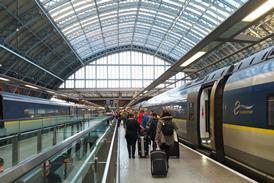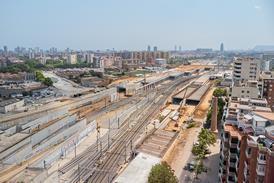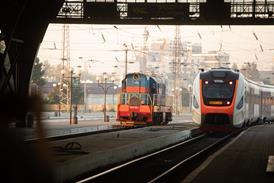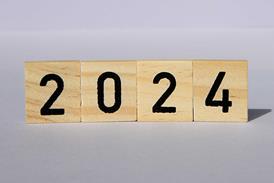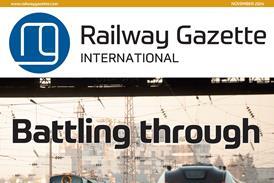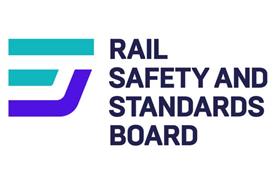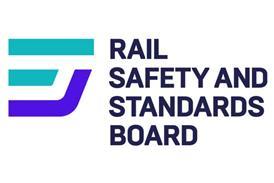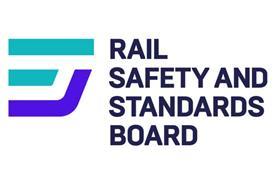RAIL travellers are increasingly demanding instant, reliable and easy to understand train running information. The market for passenger information systems is growing, and many companies are exploiting recent technical developments to provide a better travel experience.
The railway environment calls for robust, reliable, low-maintenance and vandal-proof equipment, which meet the highest standards of safety.
Display screens and voice announcements are central to PIS. In modern applications data is fed from a central control system, perhaps interfaced with timetables, train control equipment and track circuiting to provide real-time updates. Remote diagnostic facilities allow the monitoring and disconnection of malfunctioning equipment.
Vossloh System-Technik offers LCD, LED and split-flap displays. At the end of March VST installed 34 modern split-flap display units at Basel. Designed for a 15-year life cycle, the industry standard HDLC protocol is used for data transfer.
VST has supplied 52 stations around Hannover with a PIS that uses DB timetable data and also detects the presence of a train in a station. A computer calculates the available connections, and an announcement is made in German and English. Data is transmitted using an ATM network, and fewer staff are needed than for traditional voice announcements.
Electronic ink displays are expected to be available next year. These offer high-contrast, thin, lightweight reflective displays legible from a wide angle, and the small pixels permit a range of fonts.
Last month, VST signed a DM100m contract with DB to re-equip 1 200 inter-city coaches and 145 locomotives with a new information and communications system, based on the UICtrain bus. As well as electronic seat reservation modules, external and internal information displays, the stock will have side-selective door controls. Development starts this month, with two trainsets to be equipped for trial operation and EBA approval. Series installation is due to run from mid-2002 to mid-2004.
Mark IV Industries Ltd has developed a range of Organic LED display screens. These are well suited for use in railway stations, as they have low energy consumption and very flat screens. Flat screens are ideal for environments with bright natural light, where CRT monitors can suffer from reflections.
Ferrograph produces a range of single and double LED and LCD lightweight indicators and clocks for the rail market. Automatic brightness controls compensate for ambient lighting conditions to make the displays easier to read. The clocks can be driven from a radio time signal or act as slaves to other clocks.
Interalia has a range of voice announcement management tools, using Microsoft Windows on industrial grade PCs. Transit Voice is a solid state announcer that plays standard messages for metros and rail platforms. Commander is an audio file manager controlled by a touch-screen menu. Announcements stored as wav files are played at pre-set times, or to a pattern over up to 10 channels. A series of menus is used to set up special announcements. Digital storage of mpeg audio files is being developed, and a Linux version is under consideration.
French National Railways is installing modern passenger information systems on 90% of its existing Transilien suburban fleet in Ile de France. Cars will have panels over the doors with illuminated route displays showing a train’s progress and the next station. Detailed displays in each car will show expected arrival time at destination and the next stop.
SNCF has also decided to extend real-time passenger information to 300 stations throughout the Ile de France area. The first displays are already operating at several central area stations including the RER platforms at Gare de Lyon.
Emerging technologies
As well as the familiar Cathode Ray Tube (CRT) monitors, Liquid Crystal Display (LCD), Plasma and Light Emitting Diode (LED) units, several other technologies are coming into use.
An Organic LED matrix uses light emitting polymers to produce green through to reddish-orange light. These offer low energy consumption, and very flat screens. Pixel shapes and sizes are similar to those available with LCD, but an OLED offers more vibrant colours with greater brightness, and a wider viewing angle than LEDs.
Electronic Ink consists of millions of spherical microcapsules. These contain dye and particles of naturally-charged pigment. Electrodes attract or repel the spheres, producing different colours depending whether the pigment or the dye is visible. Electronic ink offers low power consumption of 10mA/cm2, and the bi-stable signs retain messages even when the power is turned off.
Electro-mechanical flap displays were once thought to be obsolete, but the application of modern materials is bringing them back into favour. They offer an individually tailored appearance, high contrast ratio even in bright light and life of over 20 years. Computer controls and synchronic motors reduce wear and noise. As power is only used when changing the display, they have low energy costs.
CAPTION: VST information screens on DB’s Hannover S-Bahn network combine flap indicators with plasma displays
CAPTION: Under SNCF’s Info@Bord programme, Transilien commuter trains are being fitted with illuminated route displays which show a train’s progress and the next station to be served
Reader Enquiry Numbers
Vossloh System-Technik 121
Mark IV Industries 122
Ferrograph 123
Interalia 124

